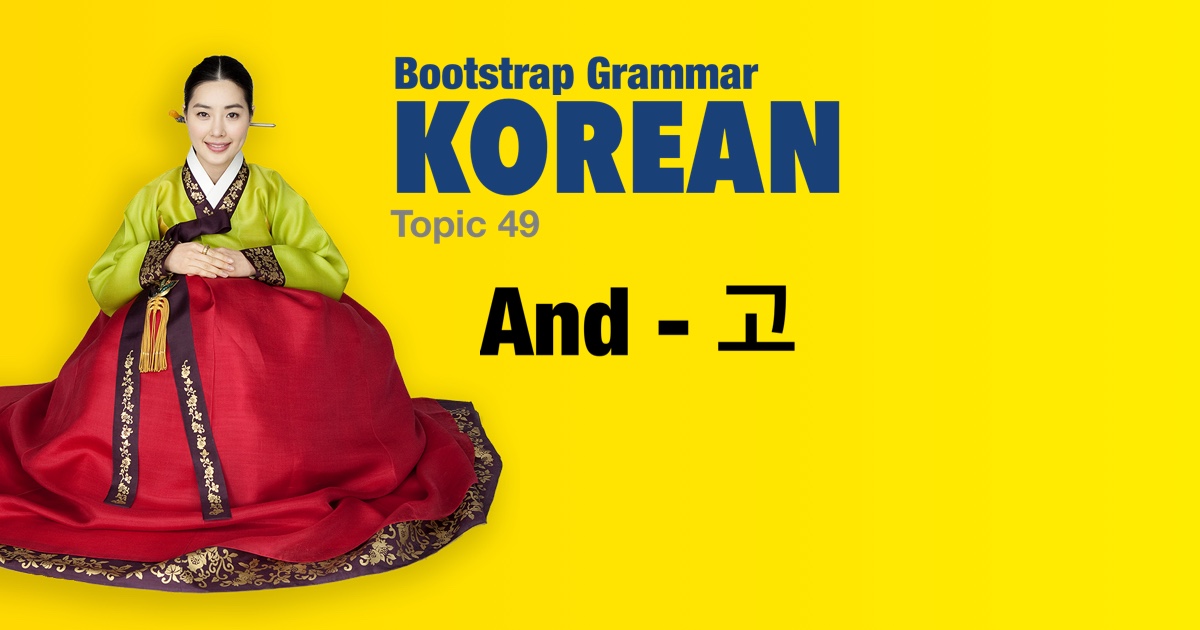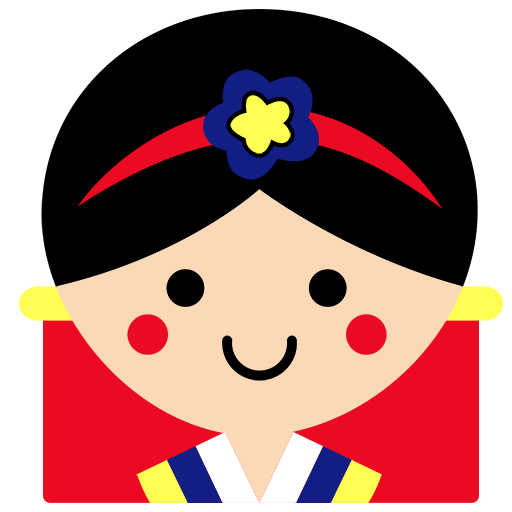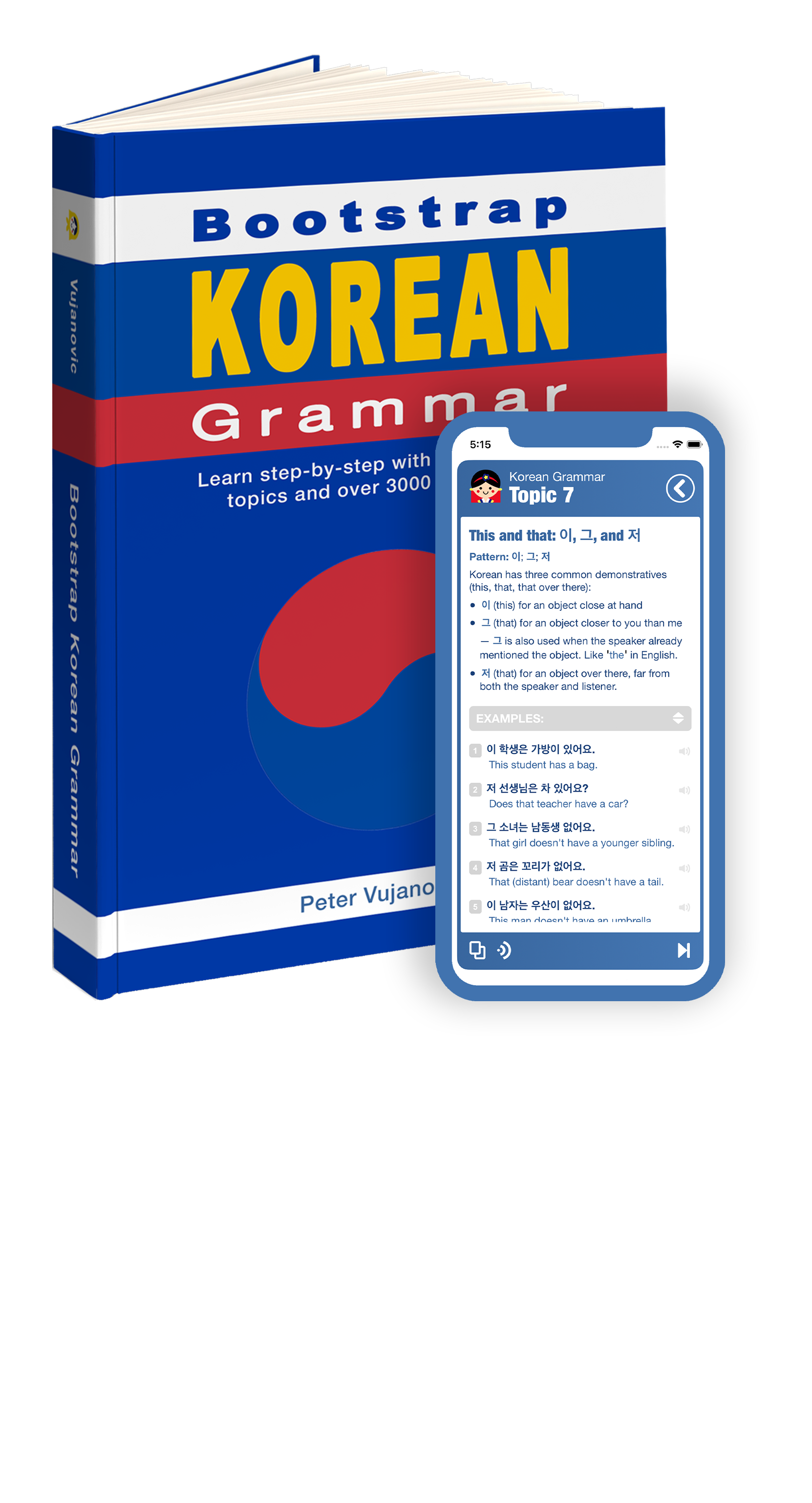Korean grammar - And - 고 |
|||
|
|||
Pattern: Verb stem + 고 The connecting particle 고 is used to link actions or events. While the actions or events need not be sequential, the context might suggest that they are. The particle 나서 can be inserted after 고 if the clauses are indeed sequential. Together they roughly translate as 'and then'. |
| Examples: | |
|
저는 밥을 먹고 갈 거예요.
I will eat and go. |
|
|
저는 책을 읽고 바로 잤어요.
I read a book and slept immediately.
|
|
|
저는 십분 동안 쉬고 갈 거예요.
I will rest for ten minutes and go. |
|
|
아기가 일분 동안 울고 배를 먹었어요.
The baby cried for one minute and ate a pear. |
|
|
저는 당근을 칼로 자르고 냉장고에 넣었어요.
I cut the carrots with the knife and put (them) in the fridge. |
|
|
우리는 서울에서 이틀 동안 머무르고 부산에 갈 거예요.
We will stay in Seoul for two days and go to Busan.
|
|
|
저는 친구를 만나고 나서 은행에 갈 거예요.
I will meet a friend and then go to the bank.
|
|
|
저는 자고 나서 한국어를 공부했어요.
I slept and then studied Korean.
|
|
|
저는 점심 먹고 나서 커피를 마셨어요.
I ate lunch and then drank coffee.
|
|
|
저는 공부하고 나서 밥을 먹어요.
I study and then eat.
|
|
|
비행기를 타고 제주도에 갈 거예요.
(I) will take a plane and go to Jeju Island.
|
|
|
숙제를 하고 놀아요.
(I) do my homework and play. |
|
|
그는 전화를 받고 나갔어요.
He answered the phone and left. |
|
|
미우는 한국 사람이고 메이는 중국 사람이에요.
Miu is Korean and Mei is Chinese.
|
|
|
일단 자고 나서 생각할 거예요.
(I) will think about it after (I) sleep. |
|
|
시험을 잘 보고 성공할 거예요.
(I) will do well on the exam and (I) will succeed. |
|
|
영화를 보고 나서 피자를 먹어요.
(I) eat pizza after watching a movie. |
|
 |
|



 The
The 